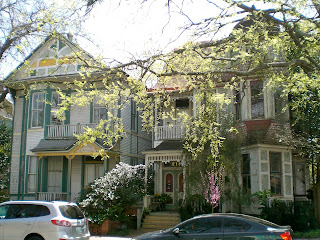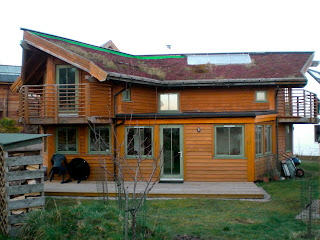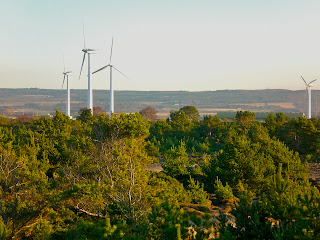I'm afraid I couldn't resist a tabloid-style headline! Things have happened quite quickly recently: back in January the consultant, in a slightly throw-away manner, said he'd email a radiologist to see whether I might be eligible for any radiotherapy treatment, but warned me not to count on it. Over the next cycles of chemo I asked the various doctors several times whether there had been any feedback, but with no luck, and I didn't think much about it. Then last week I got an appointment letter informing me I'd been booked in for the treatment just after Easter, but with a preliminary planning procedure to take place at the beginning of this week (i.e. with less than a week's notice). It felt quite stressful, because no-one at the Marsden seemed to know anything about the treatment process or what it involved, and although I did (of course) scour the internet to find out as much as I could, it's not the same as being told what it means for me personally - including the risks and potential benefits. Over those few days I felt disempowered, frustrated, and scared by not having enough information, and it reminded me how much I need at least some illusion of choice and control.

It helped enormously when I discovered that the reason no-one could tell me much about it was that the treatment is carried out at Chelsea & Westminster hospital, not at the Marsden, so at least that made sense and stopped me feeling so outraged. Apparently my clinical nurse specialist would usually have been the person to liaise with them and explain things to me, but she's been on sick leave since November and it seems that no-one else knew about this particular treatment (not many people are suitable for it, and I'm the first person to be referred by my oncology team since she's been absent). I personally still think that's pretty poor handling of the referral, but I figured that when I went in for the planning procedure I could find out more (which I did - everyone at Chelsea & Westminster was great in answering all my questions).
The treatment is Selective Internal Radiation Treatment (SIRT), sometimes called radioembolisation. As you might guess, it works on the same principle as chemoembolisation, which I had nine times in Germany. Traditional external radiotherapy is generally no good for cancer in the liver, as it damages too much healthy tissue, so SIRT cunningly injects microscopic radioactive beads into the tumours directly, via a catheter (tube) into the femoral artery in the groin and the hepatic artery, to the tumour site(s). The radioactivity wears off over two weeks, and only extends 2.5 mm around each bead, so damage to normal liver cells is minimised; and in addition the beads (which are about a third of the diameter of a human hair) lodge in the tiny blood vessels supplying the tumours and thereby block off blood and nutrients, so there's a dual action. Some of the beads gradually get cleared by the blood flow, while the rest stay in the liver permanently, but I'm assured they're harmless.
So it's a very clever process - it was developed in Australia in the 1980s and was approved in Europe more than a decade ago. When given alongside chemotherapy, there's some evidence that the stabilisation or shrinkage of tumours is better than when using either treatment alone. (This is probably another reason I wasn't given much notice, so that it could be fitted in before the end of my chemo.) However the main risk with the procedure is that some of the beads could get carried by the bloodstream into other organs such as the stomach, gall bladder or lungs, where they can cause inflammation and other potentially serious problems. The preliminary planning stage is therefore essential, to minimise that risk, and is at least as complex as the treatment itself.
So very early on Monday morning I checked in to the Marsden (I still counted as their patient) and was escorted by a nurse the half-mile or so down the road to Chelsea & Westminster. There, I met with the interventional radiologist who was to carry out the procedure, and he explained everything very clearly and reassuringly - he's clearly an expert in his field, and I liked and trusted him. I then changed into one of those delightfully fetching hospital gowns, and was hooked up to a drip in the procedure room, which was full of impressively high-tech equipment.

The radiologist gave me local anaesthetic in my groin, then inserted a catheter into the artery and fed in a thinner tube up through my blood vessels till he reached the liver. The process was done using angiography (a kind of sophisticated X-ray scanner which shows the blood vessels - although how he manoeuvres the catheter to the right place is beyond my comprehension), and at intervals he injected contrast dye which, under the X-rays, shows how the blood flows through the vessels. He also took a number of photographs (presumably like a screen shot by the scanner, but I couldn't really see), for which I needed to hold my breath for seven or eight seconds so that my diaphragm didn't move and blur the image.
From this, he identified the main blood vessels which could carry the radioactive beads towards other organs, and he then embolised (blocked) them - I'm afraid I don't know what material he used. The blockages are permanent, but cause no problems because every part of the liver (and probably all other organs and tissues in the body, I assume) is supplied with blood from more than one vessel. In this way he could make sure that when they do the procedure the risk of beads going astray is minimal. He used contrast dye again to check that the sealing-off was effective, and took more photographs, before withdrawing the catheter. Because my platelets are low from the chemo, which means my blood isn't as good at clotting, he inserted a collagen "plug" into the incision, to reduce the risk of bleeding (which, after puncturing a major artery, would obviously be very serious). The plug will dissolve over 28 days and can barely be felt under the skin.
I was very impressed with all this technology, and also with the radiologist - it's incredibly skilled work, and he had a team of about five nurses and radiologists in with him. Professor Vogl, who did my chemoembolisations in Frankfurt, is a world leader in these kinds of techniques, but I have equal faith in the radiologist here. (Out of interest, I looked into prices for SIRT in the UK and Europe if paying privately, and they seem to be around £25 000. Much more than the €4000 for a chemoembolisation, but nowhere near what I read on one message board by an American: $44 000 for the angiogram and $115 000 for the actual procedure!! Shockingly silly money. I know I've had my gripes with the Marsden, but I'm incredibly grateful for a health system which - at least in my health authority - funds these cutting-edge treatments. Isn't the NHS amazing?)
The whole process took over two hours, and although I don't think I would have been in any pain it's a long time to keep still and stay relaxed, so they sedated me with a very low dose of morphine before we started. I'm sorry to report that I didn't feel any amazing effects from it! but I had a very pleasant sense of well-being and comfort - a bit like after a couple of glasses of wine when you look around the room and think how nice everything is - and was completely unbothered by how long it took.

The final stage was that they injected a radioactive dye and sent me off to the department of Nuclear Medicine, where I spent the next hour having two kinds of scan new to me - one was a gamma camera, the other a specialised form of CT scanner, which together produce high-quality 3D images of the blood flow. This means they could track the progress of the dye and get a clear idea of where the beads will go when we do the process for real. If they identify any "leakage", they'll embolise the relevant blood vessels next time before inserting the beads.
So it was quite a morning! I felt fine while I was transferred back to a ward at the Marsden - this time in an ambulance, as, like after the chemoembolisations, I had to lie flat and still for a few hours - but as the afternoon wore on I felt rather washed-out. After all, I'd had a great deal of contrast dye pumped into me, plus the morphine, plus a drug which dilated the blood vessels during the embolisation, plus the radioactive dye, not to mention having tubes poked around my insides for two hours. I didn't have any pain, but although it was lovely to have a couple of friends come and visit, and to have supportive texts from those people who knew I was there, I felt pretty weary and was very happy to stay in bed. I was kept in overnight (which reminded me how very unrestful places wards are!) and was discharged the following morning with instructions to take things easy for the rest of the week and drink lots of water to hep flush out the dyes. I still feel quite tired, but it's manageable, and although I've had some discomfort in my abdomen again, I'm pretty sure it's from the chemo last week, not the procedure on Monday.
So the plan for the next few weeks is this: next week I've got a rare and welcome week off medicine and being a patient when I go to a friend's wedding in the States (I'll do a separate post about that when I get back, as it feels significant for many reasons). As soon as I get back, the week before Easter, I have my final (as far as I know) cycle of chemo, then the following week I'll have the SIRT. This will involve between one and three nights in hospital afterwards, and although people vary in how they tolerate it, there can be some side-effects for at least a week and possibly several weeks, so I'm planning in some convalescence time through the rest of April. I'm not yet sure how much I'll want visitors or social commitments, for those of you who are London-based, but will keep you updated here.






























